Artists are always looking for new ways to sell their artwork. If you are searching for outlets to do this, you may want to learn how to sell art on eBay.
Selling art on eBay can be extremely profitable.
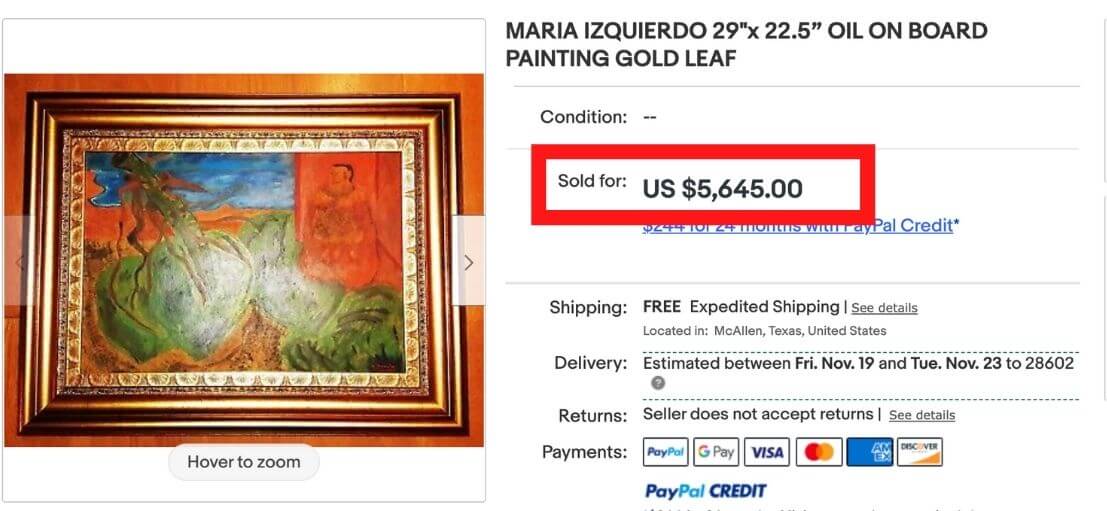
If you’re wondering how to make money with art skills, you can learn how to sell art on eBay for a profit. Here’s a step-by-step guide on how to do it.
How to Sell Art on eBay
There’s never been a better time to sell art on eBay, considering it’s one of the best items to resell online. Not to mention, it’s far more accessible than having to apply to galleries, so it’s a very realistic way to make money as a teen or as an adult artist.
1. Create an eBay Account
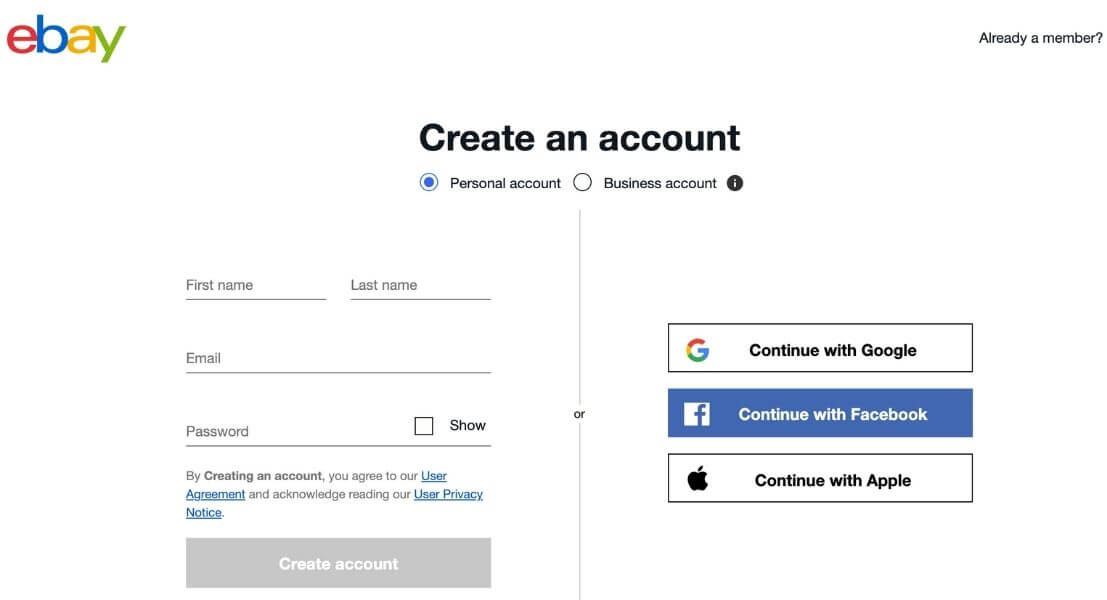
The first step to selling art on eBay is to set up an eBay account, if you don’t have one already. Even if you do have an eBay account already, it’s important that you set up a new one that will be dedicated solely to selling art.
This will help you stand out to potential buyers, who will see that you only sell art through this account. In other words, it will make you look more legitimate.
Buyers want to purchase art that is original and that can be considered an investment. They’re more likely to purchase, then, from people who are more serious about it.
Navigate to the eBay website, click on create a seller account, and follow the steps to verify your identity and connect payment accounts.
2. Create and Connect a PayPal Account
PayPal is the most commonly-accepted form of payment on eBay, and it’s also the easiest way for most people to collect money from their art sales.
If you’re signing up for a new account on PayPal, create a personal account. You don’t need a premier account or business account.
Once you set up your PayPal account, you’ll be able to link a bank account or credit card account, which you’ll need to verify before you can sell your art.
Once this is set up and verified, you should connect your PayPal account with your eBay account. To do this, you should:
- Click the “My eBay” link at the top of the page.
- Click the “Account” tab.
- Under the drop-down, click “PayPal Account.”
- Click the button for “Link My PayPal Account.”
To complete the process, eBay will just have you log into your PayPal account so it can connect to it.
Once this is done, all payments from your art sales on eBay will be automatically sent to your PayPal account. You can then use that money to transfer into your bank account that you linked on PayPal.
3. Take Great Pictures
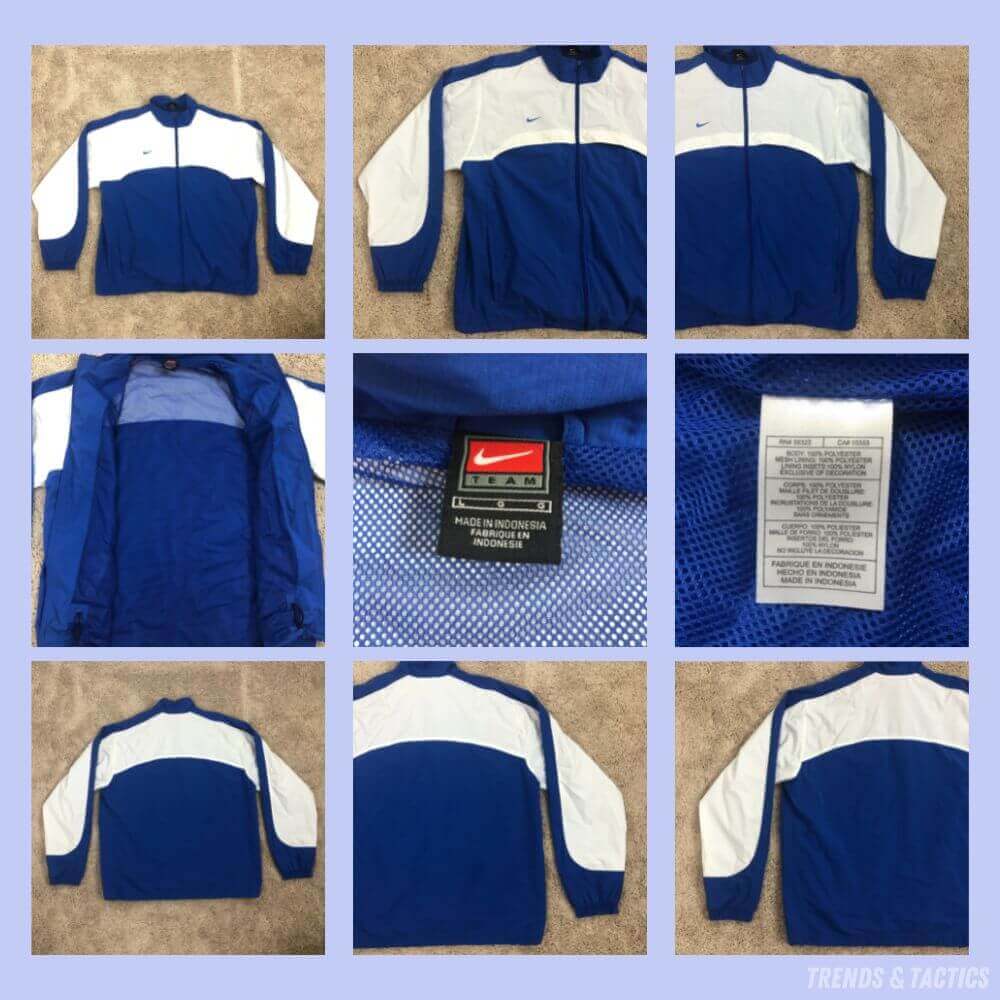
Art is something that has to be experienced, and it’s a very personal experience. Unlike a product, art can be valued very differently by different people.
An extremely important step in selling art on eBay is to make sure that you take excellent pictures of the art you want to sell. This allows potential buyers to experience the art as if it were right in front of them.
Today, the newest smartphones have excellent cameras. But, it’s not as simple as just pointing and clicking when you’re learning how to make money on eBay.
To maximize your earnings, you should pay attention to things such as lighting and backdrop. In essence, there’s art that goes into taking pictures of your art when you’re selling it on eBay.
Exactly how you photograph the item you’re selling will depend on the type of art it is. For example, if it’s a sculpture, make sure to have a neutral colored backdrop.
If it’s a painting, try a background that isn’t reflective, such as black velvet.
You should keep this in mind when you’re selling:
- Paintings
- Drawings
- Pottery
- Sculptures
Tactics for Success
- Photographing paintings can be particularly challenging. The best angle to photograph paintings is straight on. Don’t have the painting slanted, because it makes it harder for potential buyers to see.
- Before you take the photograph, remove any matting or glass that you have in the frame. This will reduce any potential glare.
- If you don’t have one already, purchase a tripod to take photos of your artwork. This will ensure the pictures are as clear and steady as possible.
4. Research a Price, Then List It
It can be hard to set a value on your artwork. You may value it a lot higher than it would sell on the open market.
You also could be worried that you might price an item too low and miss out on potential profit.
This is why it’s extremely important to research how much your artwork might sell for before you set your list price. Sold listings is an excellent way to do this research, because it reveals what that piece of art has sold sold for already on the market.
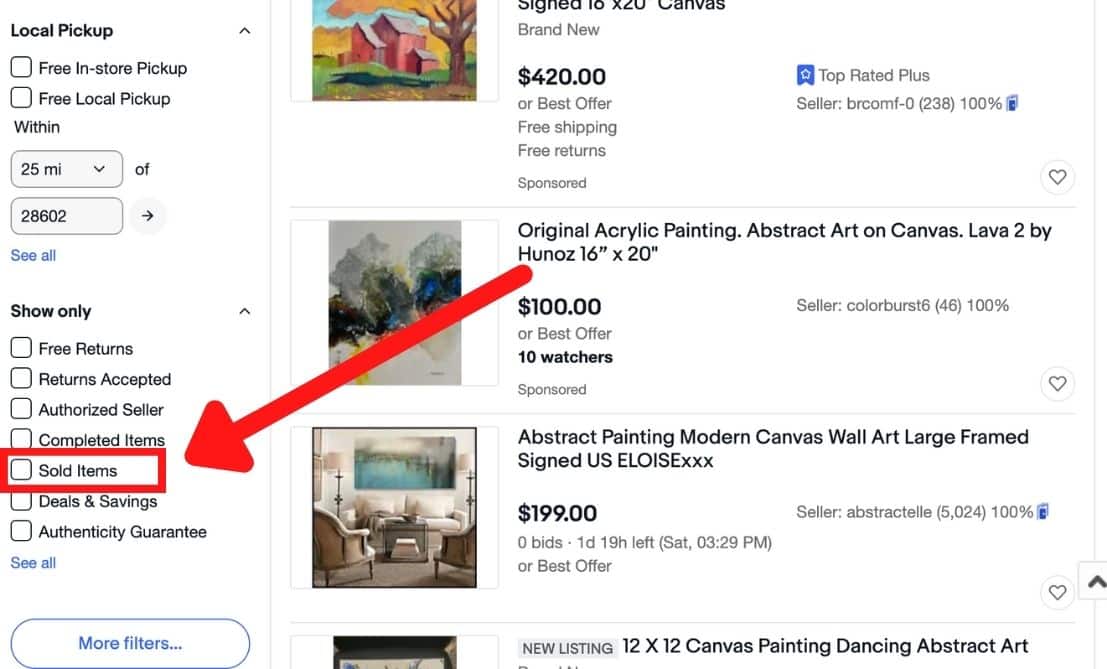
When you are considering the price for your artwork, you should consider:
- The subject of the artwork
- The size of the artwork (larger paintings typically sell for higher prices)
- The medium (oil paintings are valued more than watercolor)
- The artistic value
- The state of the artwork market
Once you have settled on a list price, it’s as simple as creating a description of your artwork and posting it for sale on eBay.
Buyers love to read about the story behind the artwork. So, if there was an inspiration behind the work, share it in the item description. That could lead to a higher sales price if your story really resonates with potential buyers.
How to make more money selling art on eBay?
There are many ways that you can maximize your earnings when learning how to sell artwork online. These strategies will help you take your operation from an enjoyable second job to a full time gig.
Don’t Overprice Your Listings
A main tip you should follow is to not overprice your artwork. This goes back to researching a list price for your work before actually making an auction go live on the site.
A great way to do this is to browse eBay for other works that are similar to yours. You’ll want to try to find some artwork that is of the same medium, same relative size and a similar subject matter.
Take a look at what your artwork is being listed for, and the action on the auction. Pricing competitively will also help you sell faster on eBay.
If you aren’t familiar with how your pricing dictates selling speed take a look at the visual below:
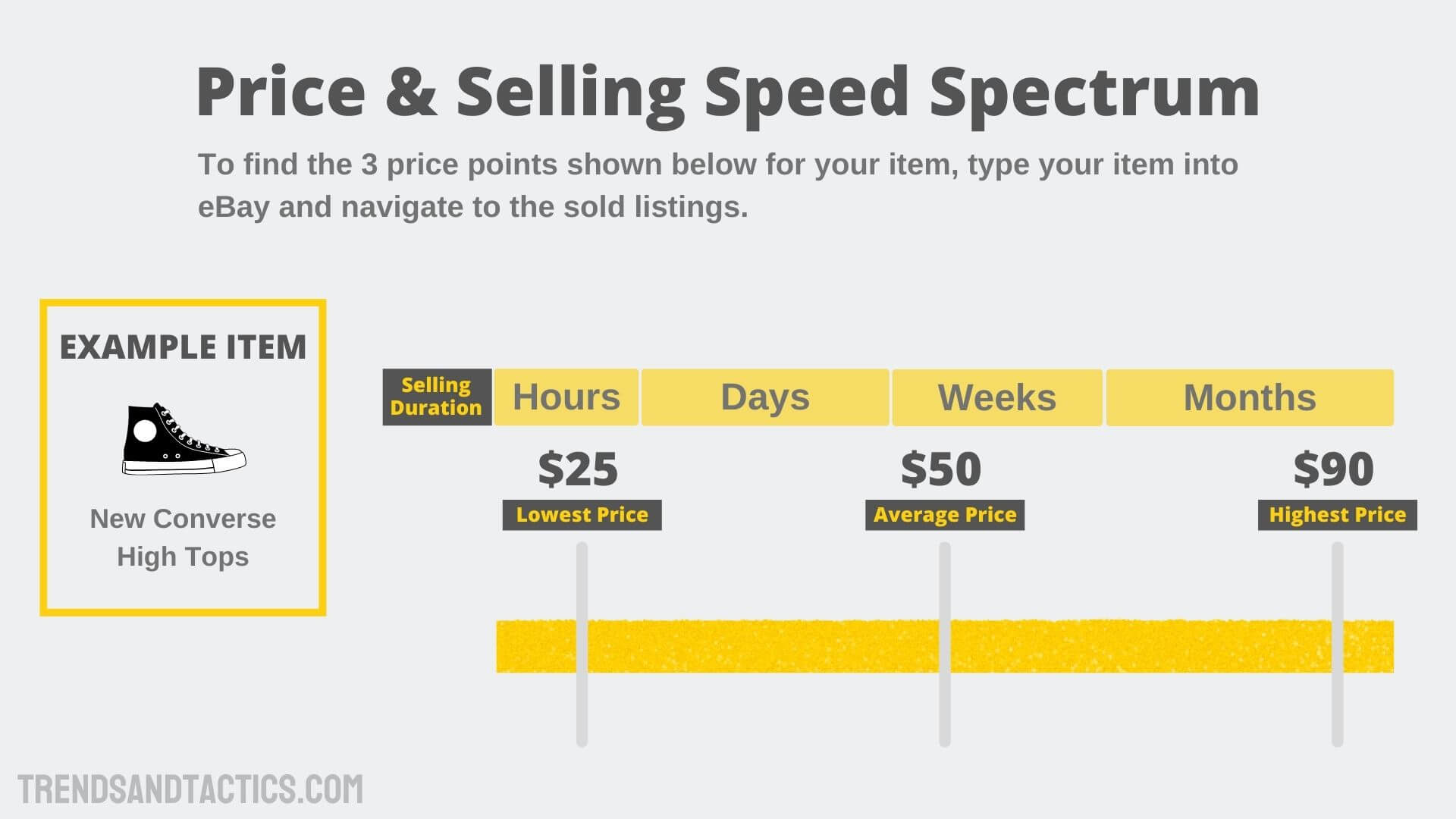
If you aren’t in a hurry to sell your artwork, price it on the high end of the market. But otherwise, it’s recommended to price around the middle of the market to be competitive and generate more interest.
If you can find some recent similar sales, you can also use this as your research base. Then, you can come up with a list price that would create some interest and action on the auction, ultimately boosting your earnings.
Build Your Seller Persona
Another tip is to increase your legitimacy as an artist. A great way to do this on eBay is by building out the page called “About Me.” This is a free feature offered to every seller on eBay, whether you have an official eBay store or not.
Here, you can write a complete description of you, including who you are, how you got into art, your experience with art and why you’re selling it on eBay.
This is a great place where you’ll be selling yourself to potential buyers.
The About Me can serve as the marketing tool for you as an artist. People who buy art buy individual pieces of art that inspire them, of course, but they also like to buy from artists they feel a connection to.
This page on eBay is an opportunity for you to create those connections with potential buyers.
Does art sell well on eBay?
You may think that it’s not a good option to sell art on eBay.
If you browse around the internet, many people talk about how hard it is to sell art there, and how much less they get from selling artwork on eBay than on other platforms or outlets.
This can be true, but only if you don’t follow some of the tips above. The fact is that art that is done well and listed/marketed correctly does sell well on eBay.
One of the biggest mistakes people make is listing art for sale on eBay under an account that also sells unrelated things.
This is one of the biggest tips you can follow from above. If you’re selling knick-knacks for $5 in one listing and then trying to sell a $100 piece of art in another listing, you’re not likely to succeed selling art on eBay.
If you put in the time and fine-tune your approach, you can learn how to sell art on eBay successfully.
Do you need a license to sell art on eBay?
eBay has a specific policy in regard to selling art on their site. You are allowed to sell any of your original artwork as well as any artwork that you’re authorized to resell.
There are some restrictions. You are allowed to sell reproductions such as exact replica paintings and posters, as long as it doesn’t violate any copyright, trademark or other laws.
For exact replica paintings, you need to clearly specify that it’s a reproduction in both the listing title and the item description.
You can sell work by other artists as long as you include the artist’s name in the title — and only if the work is actually by that artist or is an exact replica of that artist’s work.
If you are selling art with any conservation, repair or alteration, you have to include in your listing description the details of exactly what was done to the work.
If you have more questions, you can refer directly to eBay’s full policy on selling artwork on their platform.
Wrapping Up
eBay is a great site to sell artwork. It can be challenging and seem daunting, but if you follow the tips above, you can find great success and maximize your earnings doing so.
Tim is a classically-trained journalist who loves to share knowledge and information with others. In the past, he has worked in TV, online and print media, and currently works with companies to help design, create and strategize their messaging.






